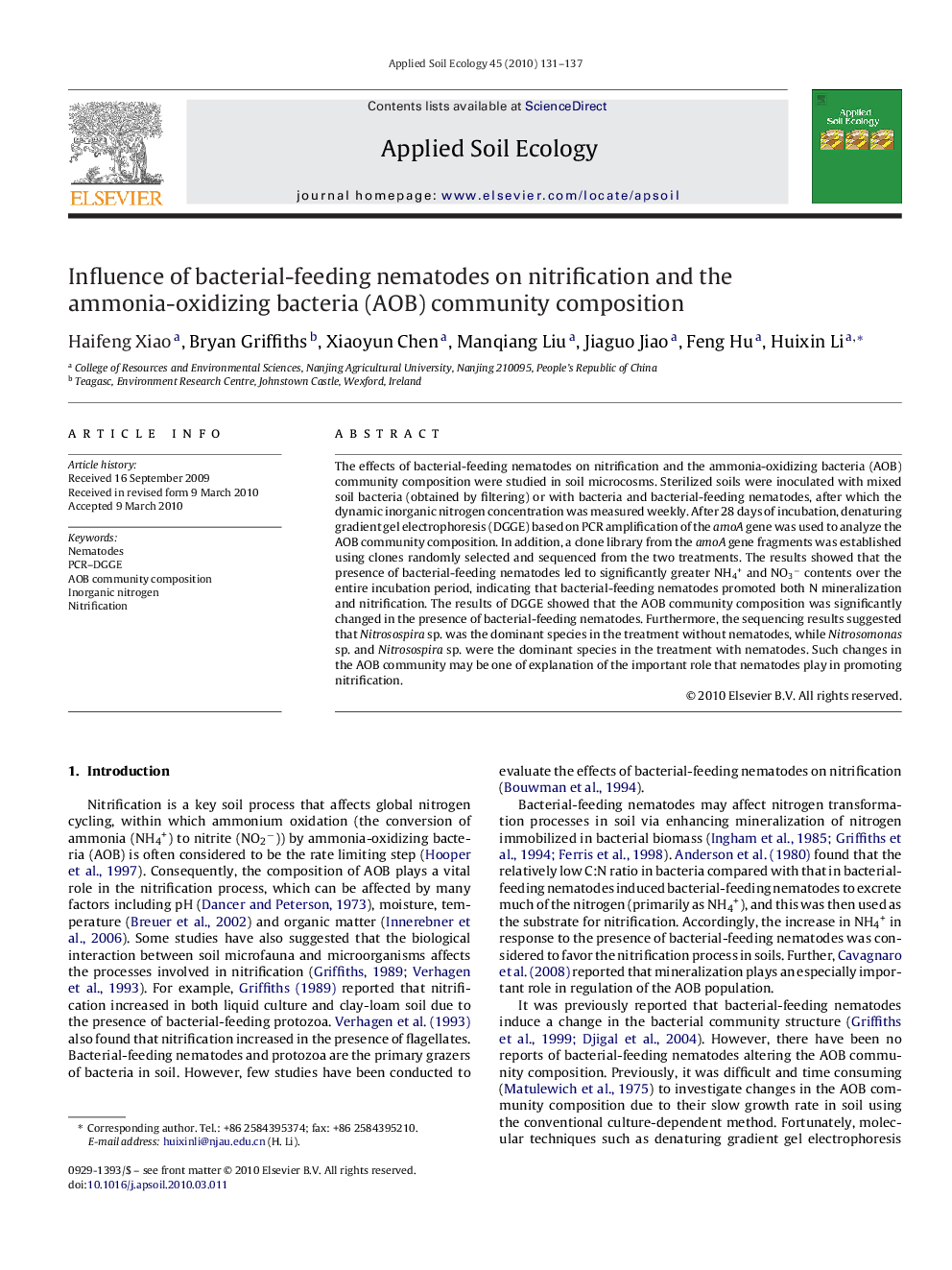| Article ID | Journal | Published Year | Pages | File Type |
|---|---|---|---|---|
| 4382926 | Applied Soil Ecology | 2010 | 7 Pages |
Abstract
The effects of bacterial-feeding nematodes on nitrification and the ammonia-oxidizing bacteria (AOB) community composition were studied in soil microcosms. Sterilized soils were inoculated with mixed soil bacteria (obtained by filtering) or with bacteria and bacterial-feeding nematodes, after which the dynamic inorganic nitrogen concentration was measured weekly. After 28 days of incubation, denaturing gradient gel electrophoresis (DGGE) based on PCR amplification of the amoA gene was used to analyze the AOB community composition. In addition, a clone library from the amoA gene fragments was established using clones randomly selected and sequenced from the two treatments. The results showed that the presence of bacterial-feeding nematodes led to significantly greater NH4+ and NO3â contents over the entire incubation period, indicating that bacterial-feeding nematodes promoted both N mineralization and nitrification. The results of DGGE showed that the AOB community composition was significantly changed in the presence of bacterial-feeding nematodes. Furthermore, the sequencing results suggested that Nitrosospira sp. was the dominant species in the treatment without nematodes, while Nitrosomonas sp. and Nitrosospira sp. were the dominant species in the treatment with nematodes. Such changes in the AOB community may be one of explanation of the important role that nematodes play in promoting nitrification.
Related Topics
Life Sciences
Agricultural and Biological Sciences
Ecology, Evolution, Behavior and Systematics
Authors
Haifeng Xiao, Bryan Griffiths, Xiaoyun Chen, Manqiang Liu, Jiaguo Jiao, Feng Hu, Huixin Li,
